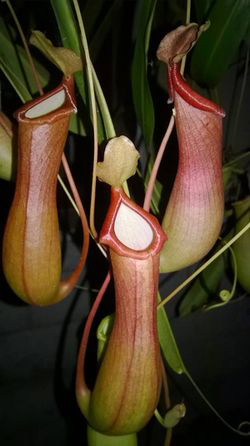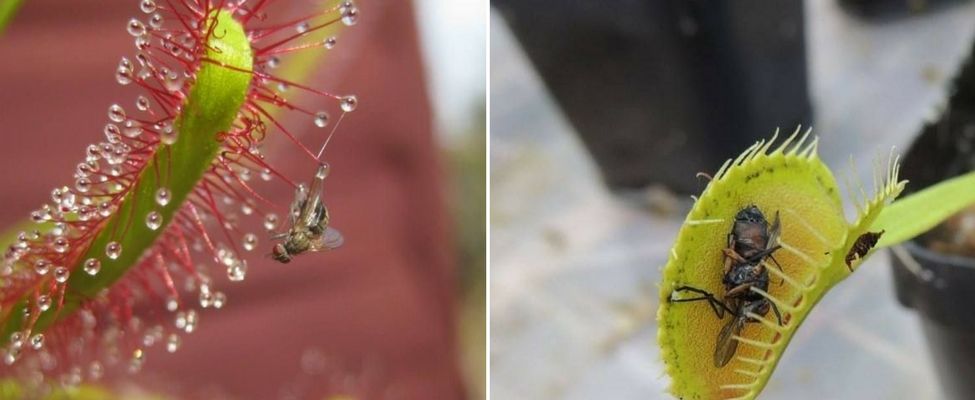Creepy crawlers and wild, man-eating flowers—these images of alien plants in science fiction are what mostly define our perception of carnivorous plants. However, things are not as freaky in the real plant world. There is much more to the diverse world of carnivorous plants, and plant lovers are exploring this remarkable variety.
Move beyond the conventional money plants, cacti and orchids in your home gardens. Bring in the pitcher plants, sundews and Venus flytraps—all the names which we might have last heard in our science classes in school. For Prajay Jervis Fernandes, who works as a communication trainer in Mumbai, the five varieties of pitcher plants (Nepenthes) that adorn his balcony garden are a matter of pride. “They are one of the weirdest species to have evolved over time, and I find them very intriguing,” says Prajay.
Though a plant lover, he is not one for flowering plants and the conventional gardener's choices like orchids. His fascination with unique plants is evident when he mentions the varieties of other plants in his garden—bhut jolakia (world's hottest chilli), miracle berry, lemon grass and insulin plant, to name a few.
 Pitcher plants in Nirmal Kumar's garden
Pitcher plants in Nirmal Kumar's garden
“There is such an interesting variety among carnivorous plants. However, not many are aware of these options,” says Nirmal Kumar, an interior designer in Kochi, Kerala. For Nirmal, too, his collection of pitcher plants is first love. His garden at his home has an even more interesting collection of carnivorous plants—various varieties of pitcher plant, sundew, butterwort, Venus flytrap, and sarracenia (American pitcher plants).
Carnivorous plants, with their myriad shapes, patterns, and behaviour, make an interesting collection. Be it the trumpet like-structure of the pitcher plant, the microscopic, dewdrop-like flowers of the sundew plant, or the bright purple flowers of the seemingly innocent-looking butterwort, the variety is intriguing. Says Nirmal: “Pitcher plants are the most common among carnivorous plants in India. In fact, tropical climate like that of Kerala suit them best.”
Though the idea of having 'meat-eating' plants might be a turnoff for many, this is one thing that keeps people like Prajay interested. “Carnivorous plants and the idea of non-vegetarian plants intrigue me. That's probably why even I am not a vegetarian,” quips Prajay.
In fact, the process in which these plants lure and trap insects is a marvel in itself. Contrary to what one might expect of 'meat-eating' plants, these species smell good, though undetectable to the human nose. Their meals—insects come willingly to the trap, drawn by the pleasant smell of nectar. Each variety of plants kill their prey in a different way. For instance, the depths of the pitcher plant's trumpet-like cavity is filled with a fluid, similar to the digestive juices in the human stomach. The insects that unknowingly fly around the pitcher, attracted by its scent, perch onto the slippery rim of the pitcher and accidentally slide into the pitcher's deadly pool. And then, they drown to death, and are digested by the pitcher.
While the pitcher is nature's own honeytrap, the Venus flytrap has hair-like sensors on the edges of leaves which sense the presence of prey, and snap shut. The beautiful sundew plants on the other hand, trap insects on to their glue-covered tentacles. The yellowish leaves of the Butterwort plant secrete a sticky fluid which attracts insects. When the insects get trapped, the leaf gently curls inwards, and the insect meets its doom.
Retired Lt Colonel Maneet Singh who runs a nursery Plantae Paradise in Chandigarh says growing these carnivorous plants is a hobby for many. At his nursery he grows sundews, flytraps and butterworts. Initially, he collected varieties from various hobbyists and started growing them in a small greenhouse. Today, the collection draws many school students who come here to study and observe these fascinating plants that otherwise are spotted only in textbooks. Singh, however, has a word of caution on trading in pitcher plants. Unlike several other pitcher plant species, Nepenthes Khasiana, which grows in the jungles of northeast, is an endangered species as per the IUCN list. “There is no problem in trading other types of Nepenthes but unfortunately nursery people often do not know the origin of plant or correct identification of plant and then trade in this endangered plant too. This can lead to exploitation of endangered Khasiana,” says Singh.
 (Left) An insect trapped on tentacles of sundew; insect trapped in a Venus flytrap | Pic courtesy: Plantae Paradise
(Left) An insect trapped on tentacles of sundew; insect trapped in a Venus flytrap | Pic courtesy: Plantae Paradise
However, interesting they may seem, caring for these plants are no easy task. They need ample sunlight, humidity and water requirements need extra care. They are usually grown in trays of water. Tap water is a strict no-no. These trays are filled with materials like sand, moss or coco peat (fibre from coconut husks). While Prajay uses bottled mineral water, Nirmal also depends on harvested rain water. The water needs to be changed regularly before acidic levels go up in the medium. “If water is easily available, change once in a week, otherwise after 15-20 days,” says Singh.
What is interesting about carnivorous plants, says Nirmal, is that they can survive in nutrient-deficient mediums. Though carnivores behave physiologically like other plants, they do not derive their nutrients from the soil. For this, they depend on the insects. “They cannot tolerate chemicals, and fertilisers that leech in from the soil. So, it is ideal to keep them away from other plants,” he adds. These plants are, in fact, best examples of what evolutionary scientists call the 'carnivorous syndrome'. When plants ended up in nutrient-deficient soils that lacked nitrogen, a key ingredient for plants, they turned to insect flesh to fulfill their nitrogen requirements.
While there is a group of carnivore enthusiasts, sourcing these plants is not easy. While they occasionally find a spot in nurseries, and online plants nurseries, too, they are yet to gain popularity. And even while these plant varieties are sourced from the US, Taiwan or Thailand, they sometimes face permission issues at the airport customs, says Nirmal. But that hasn't stopped him from taking his love forward.







